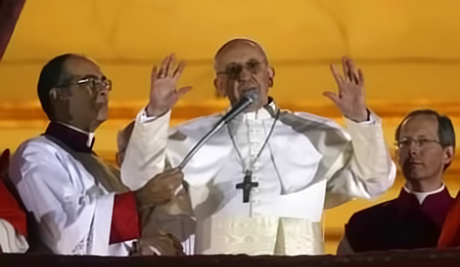When Jorge Mario Bergoglio appeared in the white papal cassock on the central balcony of St Peter’s Basilica on 13 March 2013, few people – if anyone – could have predicted how the then 76-year-old Jesuit would dramatically re-energise the Catholic Church over the next 12 months.
He had been profiled as a moderately conservative archbishop from Argentina, renowned for his simple lifestyle and pastoral affection for the poor.
Perhaps the only clue of his intention radically to reform the papacy and the Church, though barely understood at the time, was his bold and unprecedented decision to name himself after St Francis of Assisi.
People in the rainy square below fell silent and wept with joy as the newly elected Bishop of Rome, as he explicitly described himself, bowed his head and asked them to pray over him.
“Before the bishop blesses his people, I ask you to pray to the Lord so that he will bless me. Let us make this prayer in silence – your prayer over me,” he said.
That evening Francis declared that he was launching the Church of Rome, “which presides in charity over all the other Churches”, on new journey.
He said: “We take up this journey – bishop and people.”
It would be months before most Catholics, especially the new Pope’s fellow priests and bishops, would begin to understand the profound significance of those words. Continue reading.
Source: The Tablet
Image: Financial Review
